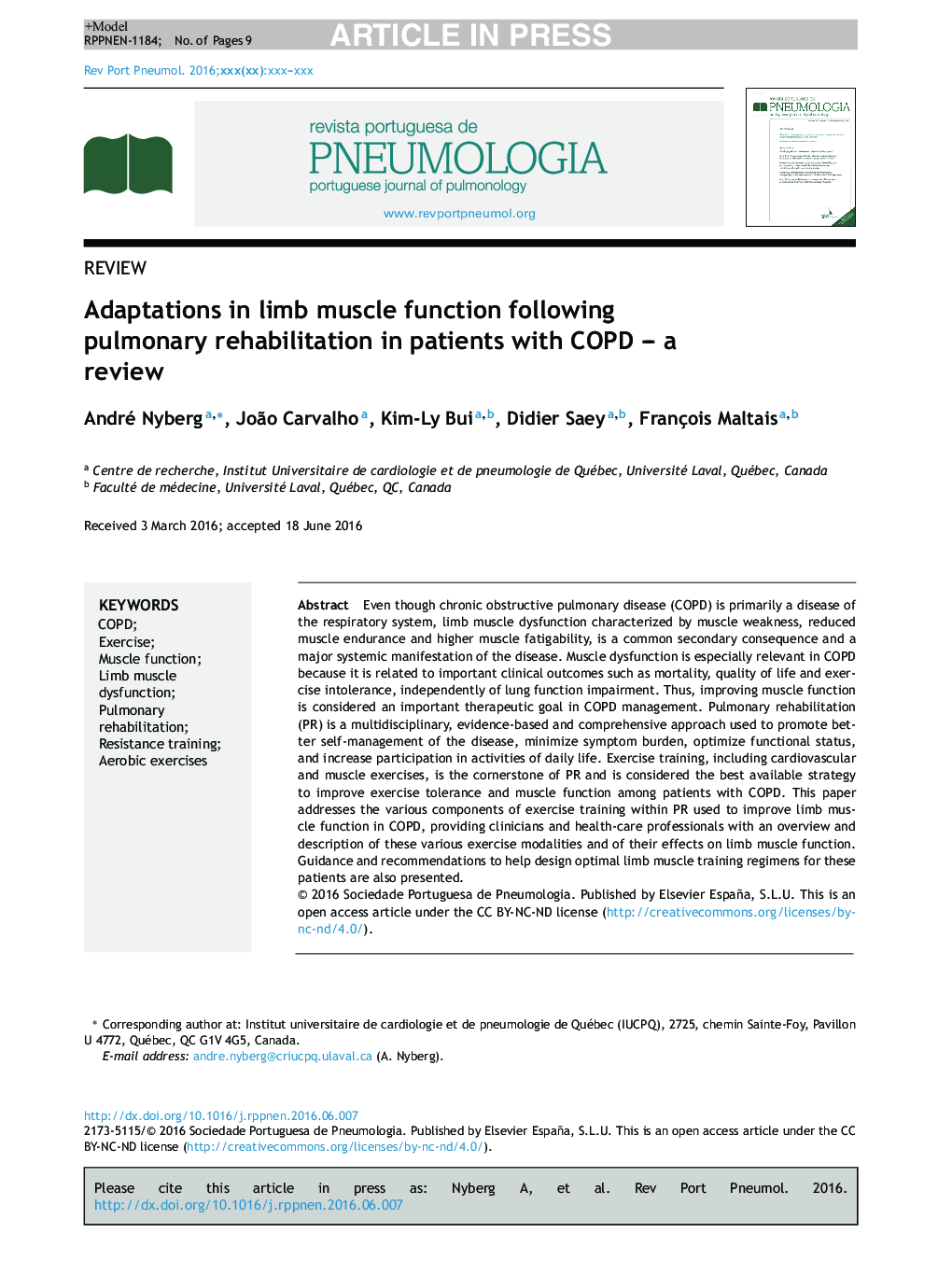| Article ID | Journal | Published Year | Pages | File Type |
|---|---|---|---|---|
| 8820545 | Revista Portuguesa de Pneumologia (English Edition) | 2016 | 9 Pages |
Abstract
Even though chronic obstructive pulmonary disease (COPD) is primarily a disease of the respiratory system, limb muscle dysfunction characterized by muscle weakness, reduced muscle endurance and higher muscle fatigability, is a common secondary consequence and a major systemic manifestation of the disease. Muscle dysfunction is especially relevant in COPD because it is related to important clinical outcomes such as mortality, quality of life and exercise intolerance, independently of lung function impairment. Thus, improving muscle function is considered an important therapeutic goal in COPD management. Pulmonary rehabilitation (PR) is a multidisciplinary, evidence-based and comprehensive approach used to promote better self-management of the disease, minimize symptom burden, optimize functional status, and increase participation in activities of daily life. Exercise training, including cardiovascular and muscle exercises, is the cornerstone of PR and is considered the best available strategy to improve exercise tolerance and muscle function among patients with COPD. This paper addresses the various components of exercise training within PR used to improve limb muscle function in COPD, providing clinicians and health-care professionals with an overview and description of these various exercise modalities and of their effects on limb muscle function. Guidance and recommendations to help design optimal limb muscle training regimens for these patients are also presented.
Related Topics
Health Sciences
Medicine and Dentistry
Pulmonary and Respiratory Medicine
Authors
André Nyberg, João Carvalho, Kim-Ly Bui, Didier Saey, François Maltais,
